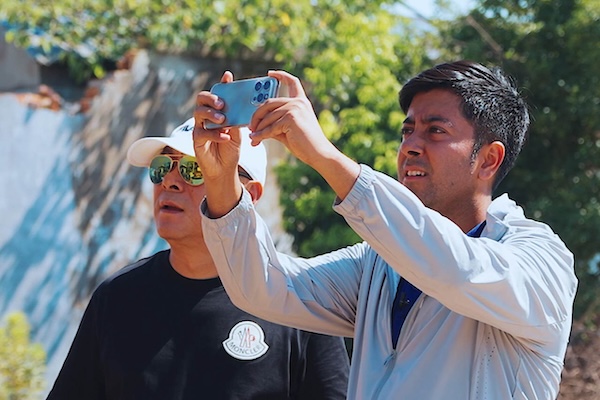BMW protects Grand Canal's cultural gems

Franz Decker, president and CEO of BMW Brilliance Automotive, learns how to make a traditional Chinese fan at Wangxingji, a time-honored fan-making brand in Hangzhou, Zhejiang province, on July 23, 2024. [Photo provided to chinadaily.com.cn]
BMW China has kicked off a three-year program with the Network of International Culturalink Entities to protect cultural treasures associated with China's Grand Canal, which is the world's longest artificial waterway.
The initiative, called the 2024 BMW China Culture Journey-Grand Canal Cultural Protection Project, is dedicated to preserving and promoting items of tangible and intangible cultural heritage along the vast waterway system.
Inscribed as a UNESCO World Heritage Site in 2014, the Grand Canal runs from Beijing in North China to Zhejiang province in East China, extending for over 2,000 km and linking five of China's major river basins.
Built from the 5th century BC onwards, it was conceived as a unified means of communication for the Chinese nation for the first time in the 7th century AD.
This led to a series of gigantic construction sites, creating the world's largest and most extensive civil engineering project prior to the Industrial Revolution.
It has played an important role in ensuring the country's economic prosperity and stability and is still in use today as a major means of communication.
Shan Jixiang, the initiator of the Grand Canal's nomination for the UNESCO World Heritage List, said the Grand Canal is a living heritage and a continuously flowing cultural treasure.
"In the presence of such a profound and ancient 'cultural river', we are all 'curious learners' who must study and inherit the wisdom embedded within the Grand Canal, enabling this heritage to shape our future," said Shan, also a former director of the Palace Museum.
There are 85 individual elements forming the serial property of the Grand Canal. Along it are 17 items on the UNESCO's List of Intangible Cultural Heritage and over 450 items of intangible cultural heritage at the national level.
The 2024 BMW China Culture Journey employs innovative actions to engage the public and raise awareness.
It consists of three main components: enabling intangible cultural heritage inheritors, a cultural exploration tour, and the release of a tour guide.
The tour involved an in-depth study of Chang'an Lock in Jiaxing, Zhejiang province, in late July.
The water conservancy project dating back to the Song Dynasty showcases ancient Chinese people's water management technology, exemplifying the wisdom of "following nature's course".
Also, 10 inheritors of intangible cultural heritage along the Grand Canal are selected to attend the Tsinghua-BMW Innovation Center program. The items include Su embroidery, Yun brocade, and blue calico.
These inheritors will work with Tsinghua professors to create products infused with elements of intangible cultural heritage, bringing these cultural heritages to modern life.
Franz Decker, president and CEO of BMW Brilliance Automotive, said, "Only by adhering to a long-term perspective can we reach far. Our 18-year dedication and support for cultural protection in China is the best testament to our long-term perspective."
With the support of the BMW Warm Heart Fund, the BMW China Culture Journey has been dedicated to protecting intangible cultural heritage in China for 18 years.
It has explored 24 provinces and municipalities and 6 national-level ecological protection experimental zones, empowering nearly 1,000 intangible cultural heritage inheritors through funding and training in collaboration with Tsinghua University.


 Red boat spirit inspires new developments
Red boat spirit inspires new developments Zhejiang: A Decade of Progress
Zhejiang: A Decade of Progress A look at Jiaxing's H1 economic data
A look at Jiaxing's H1 economic data